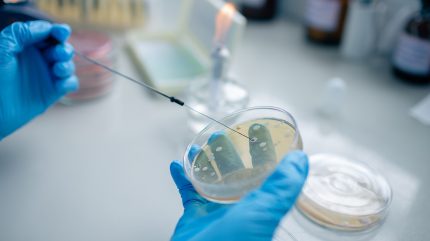
The US Food and Drug Administration (FDA) has cleared the investigational new drug application (IND) for Ensoma’s lead programme, EN-374, targeting X-linked chronic granulomatous disease (X-CGD), a rare genetic disorder.
According to Ensoma, this in vivo haematopoietic stem cell (HSC)-directed therapy utilises virus-like particles (VLPs) for the delivery of genetic payloads to engineer HSCs, aiming for sustained expression of a cytochrome b-245 beta chain (CYBB) transgene in neutrophils.

Discover B2B Marketing That Performs
Combine business intelligence and editorial excellence to reach engaged professionals across 36 leading media platforms.
This process is intended to restore the function of the nicotinamide adenine dinucleotide phosphate hydrogen (NADPH) oxidase enzyme complex, which is essential for immune defence.
A Phase I/II trial is set to assess the therapy’s potential efficacy and safety and determine an appropriate dose for further clinical development in patients with X-CGD.
Adult X-CGD subjects will initially be enrolled in the trial’s dose-escalation part, followed by paediatric subjects’ enrolment in a dose-expansion cohort.
EN-374 received FDA’s orphan drug and rare paediatric disease designations earlier this year.

US Tariffs are shifting - will you react or anticipate?
Don’t let policy changes catch you off guard. Stay proactive with real-time data and expert analysis.
By GlobalDataIn preclinical studies, the therapy claims to have shown promise in restoring CYBB protein expression and NADPH oxidase activity in circulating neutrophils.
Ensoma noted that CGD is said to impact approximately one in 100,000 to 200,000 live births.
The most prevalent CGD form, X-CGD, is said to account for 60%-70% of cases and is characterised by mutations in the CYBB gene that hinder neutrophils from combating infections.
CGD patients often suffer from severe, recurrent bacterial and fungal infections, resulting in chronic inflammation and life-threatening complications.
Ensoma CEO Jim Burns said: “The FDA’s clearance of our EN-374 IND is a pivotal moment for Ensoma that further establishes our unique in vivo HSC engineering platform and brings us one step closer to meaningfully improving outcomes for people living with X-CGD and other chronic diseases.
“We have completed all manufacturing activities for EN-374, through which we have successfully demonstrated reproducibility and scalability, and anticipate initiating our Phase I/II clinical trial in Q4 2025.”



